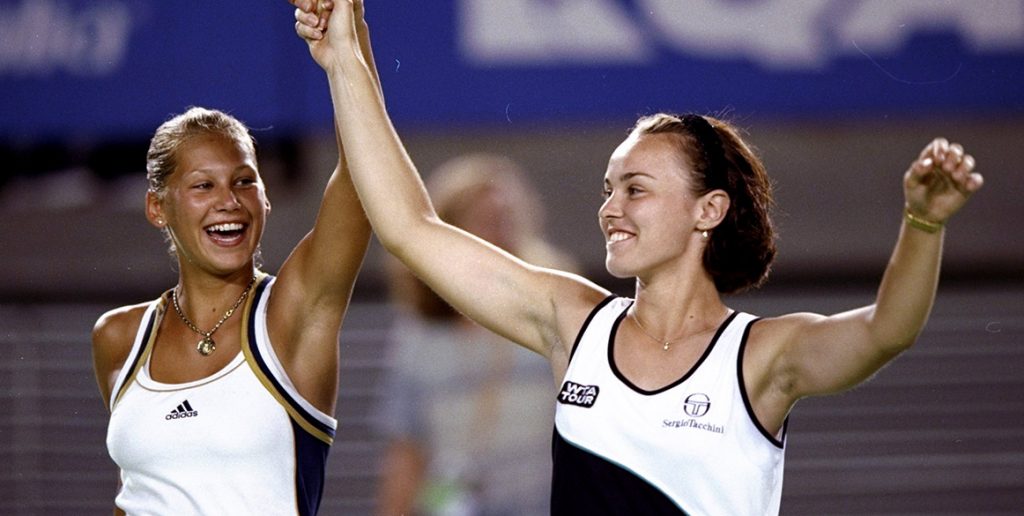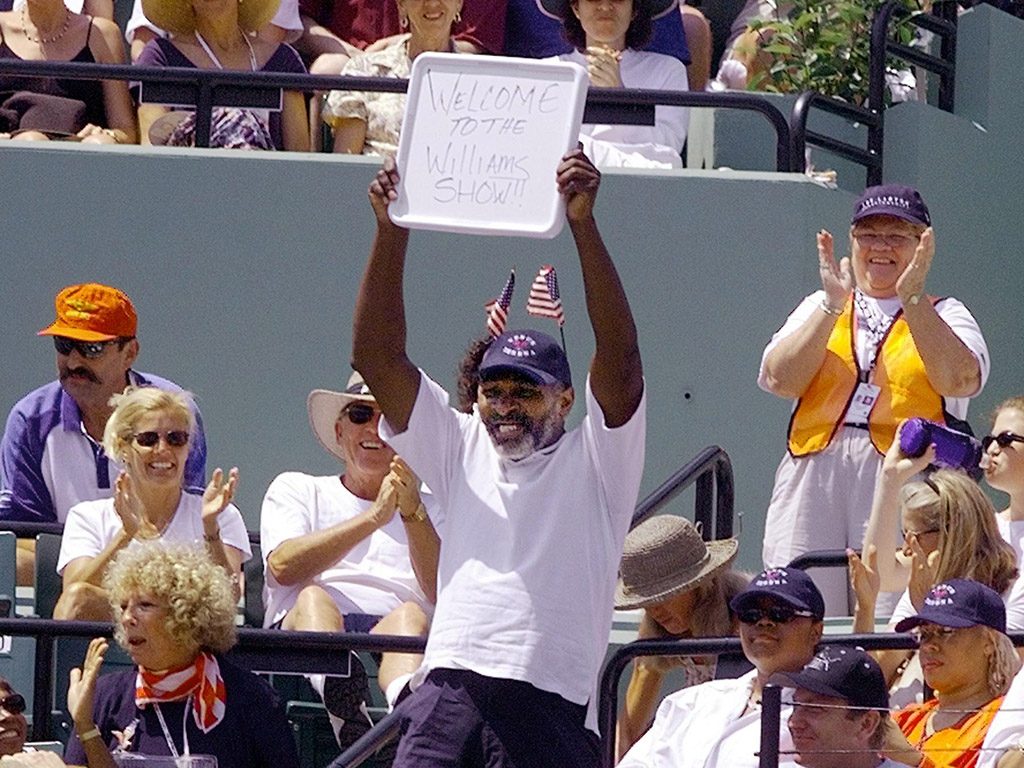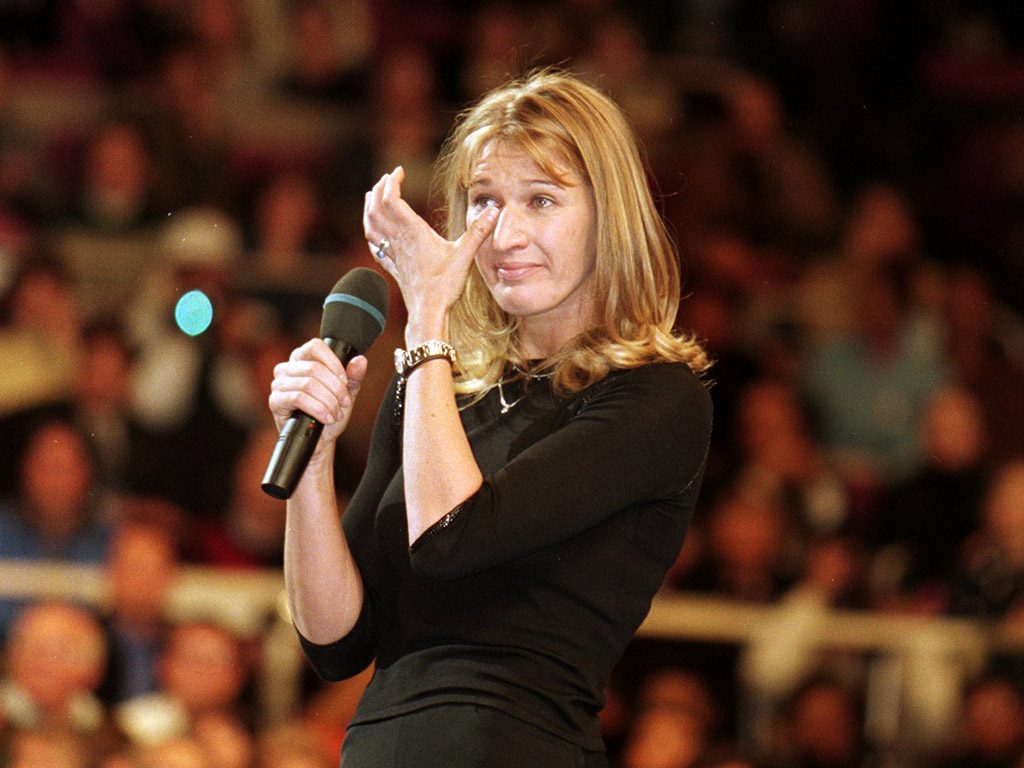Was 1999 the most memorable season in tennis?
Recency bias may lead people to disagree, but with the sheer volume of classic matches, stunning storylines, notable breakthroughs and jaw-dropping moments occurring in a glorious 11-month stretch 20 years ago, the case for 1999 is a strong one.
This was especially so on the women’s side, with 1999 marking the beginning of the WTA’s golden era. Martina Hingis was at the peak of her powers. Lindsay Davenport had joined her as a reigning Grand Slam champion. Venus and Serena Williams started truly impacting the sport. Steffi Graf and Monica Seles were still contending for major titles. Amelie Mauresmo and Kim Clijsters emerged. Jennifer Capriati was regaining momentum. Anna Kournikova morphed into a doubles force. Teen-aged superstars fuelled incredible media and fan interest in the women’s game.
SMASHTALK: previewing the US Open
As this was all unfolding, significant things were occurring on the men’s tour – most notably Andre Agassi’s resurgence to become the game’s dominant force. Running parallel to his success was Pete Sampras’ record-breaking feats at Wimbledon, while a trio of talented Aussies – Pat Rafter, Mark Philippoussis and Lleyton Hewitt – helped Australia dominate the sport’s team events.
Twenty years on from that incredible season, we reflect on some of the biggest highlights from that time – in chronological order.
The Frenchwoman was unseeded – back in those days, just 16 players were seeded at major tournaments – when she arrived at Melbourne Park as the world No.29. She went on to upset ninth-ranked Patty Schnyder and world No.12 Dominique Van Roost en route to the semifinals, where she stunned reigning US Open champion and top seed Lindsay Davenport 7-5 in the third set. “There’s a big story here and a big new player on the scene,” the TV commentator declared after Mauresmo unleashed a backhand winner to reach her first major final.
Mauresmo’s run was not without controversy, though it was not of her own doing. Just a teenager at the time, she was openly gay and her girlfriend sat in her entourage; in the 1990s this was quite a statement. Davenport and Martina Hingis, who beat Mauresmo in the final, both made references to Mauresmo’s “masculine” qualities, but said their comments were taken out of context and that they were referring to her playing style. Australian Tennis Magazine, more kindly, described her as a more modern, powerful version of Gabriela Sabatini.
Mauresmo would go on to reach world No.1 and win two Grand Slam titles. But it was at Australian Open 1999 she emerged as a tennis superstar.
As Mauresmo was making waves, one of the sport’s most popular doubles combinations was carving up the field in Melbourne. Hingis and Anna Kournikova, who described themselves as the “Spice Girls” of tennis, dropped just one set in winning the Australian Open title, beating No.2 seeds Lisa Raymond and Rennae Stubbs in the semifinals before toppling No.1 seeds Davenport and Natasha Zvereva in the final.

Martina Hingis (R) and Anna Kournikova celebrate their women’s doubles title at Australian Open 1999 (Getty Images)
Hingis and Kournikova would go on that year to reach the French Open final, where they fell to Venus and Serena Williams – imagine a doubles match of that stature today! – and also won the titles at Indian Wells, Rome, Eastbourne and the WTA Championships. In an era where most top singles players also played doubles, the much-maligned Kournikova ended the 1999 season as the world’s No.1 doubles player.
Widely regarded as the two greatest singles players in women’s tennis history, Serena Williams and Steffi Graf met in the Indian Wells final of 1999, their one and only clash in a final. While Graf was at the tail-end of her career, Williams’ was just getting started, and their three-set barnstormer in California – which Serena won 6-3 3-6 7-5 — could be seen as a true changing of the guard.
Graf, who beat Serena 7-5 in the third set of their only other meeting in Sydney two months earlier, ended her career with an Open Era-record 22 Grand Slam singles titles, a mark eclipsed when Serena won her 23rd at Australian Open 2017.
Men’s tennis enjoyed a similar intergenerational battle two years later when Roger Federer met Pete Sampras in the fourth round of the 2001 Wimbledon championships – a match also won 7-5 in the final set by the younger player.
Just two weeks after winning in Indian Wells, Serena stormed to the final in Miami without dropping a set, extending her winning streak to 16 matches. There she met sister Venus in what would be the first all-Williams final in history, and the first time two sisters had ever met in a WTA final.
The manner in which the sisters arrived in the final was a huge statement; Serena ousted world No.1 Hingis 6-4 7-6(3) before Venus overpowered Graf 6-2 6-4. Prior to the start of their dramatic final, which Venus won 6-1 4-6 6-4, father Richard flaunted the sign “Welcome to the Williams show!” from his seat in the Crandon Park Stadium.

KEY BISCAYNE, UNITED STATES: Richard Williams holds up a sign reading “Welcome to the Williams Show” prior to the start of the women’s final on 28 March 1999 between his daughters Venus and Serena (Photo: ROBERT SULLIVAN/AFP/Getty Images)
Venus and Serena would go on to clash in the final of the now-defunct Grand Slam Cup in Munich in September 1999, with Serena gaining revenge via a three-set victory; her first win over Venus in four attempts.
Twenty years on, people still talk about this colossal Grand Slam final. It would mark the last – and sweetest – of Graf’s 22 major singles titles, and perhaps the beginning of the end for Hingis, who would never win another Grand Slam singles crown.
The Swiss superstar had already won five; she entered Roland Garros as the reigning Australian Open champion and world No.1 and did not drop a set during her march to the final. There she led Graf 6-4 2-0, but as Graf’s champion qualities emerged and the vociferous crowd began to exert its influence, the 18-year-old unravelled. “I really don’t think Martina Hingis took her (Graf) as seriously as she should have,” commentator Chris Evert observed.
As the final unfolded, Hingis crossed the net to inspect a ball mark, repeatedly clashed with the chair umpire, served underarm when facing match point – enraging the spectators – and fled the court prior the trophy ceremony, eventually coaxed back onto court, while weeping, by her mother.
“I just have to thank you all – I feel French,” Graf said in her emotional acceptance speech. “I’ve played all around the world but I’ve never had a crowd like that, ever, never.”
By beating Davenport in the quarters and Monica Seles in the semis before Hingis in the final, Graf had defeated the world’s top three players in her final three matches to win the crown.
The men’s final very nearly matched the emotional level attained a day earlier, capping an extraordinary fortnight at Roland Garros.
The match pitted Andre Agassi against Andrei Medvedev, two unlikely finalists who’d arrived in Paris with practically no clay-court form to speak of in 1999. Agassi, ranked 14th, had during his career won the Australian, Wimbledon and US titles but suffered Roland Garros heartbreak in losing finals of 1990 and 1991. In 1999, he trailed Arnaud Clement by two-sets-to-one in the second round then upset fourth-ranked Carlos Moya in the last 16; he eventually progressed to the final where he faced the 100th-ranked Medvedev – a player who just two months earlier Agassi had convinced not to quit tennis.
The Ukrainian surged to a two-sets-to-love lead before Agassi eventually settled and wrested control of the match, becoming the fifth man in history – at that time – to win all four major singles trophies, and the first to do so on three different surfaces.
“I never dreamed I would see this day. This was the greatest thing I could ever do,” he said. “Although I could have lived with it, losing would have been devastating to me.”
The Wimbledon women’s draw was rocked when Hingis – still reeling from that French Open final defeat – was thumped 6-2 6-0 by 16-year-old Australian qualifier Jelena Dokic in the first round. Dokic would go on to upset seventh-ranked Mary Pierce to reach her first Grand Slam quarterfinal, yet, incredibly, she would not be the biggest story of the tournament.
Fellow qualifier Alexandra Stevenson, aged 18, beat a succession of higher-ranked opponents, and then Dokic in a three-set quarterfinal, to become the first female qualifier in Wimbledon history to advance to the semifinals. During the tournament fortnight she became an even bigger sensation when it was revealed her father was basketball legend Julius Irving.
Cutting a swathe through the opposite site of the draw was powerful Croatian 17-year-old Mirjana Lucic, who stunned No.4 seed Seles on Centre Court in the third round before joining Stevenson in the last four, becoming the then-lowest ranked player to ever reach a Grand Slam semifinal. While Stevenson was hammered 6-1 6-1 in the semifinals by Davenport, Lucic stretched Graf to three compelling sets before the German eventually triumphed.
Closing the 1999 Wimbledon championships was Pete Sampras’ masterclass over the in-form Agassi, who had arrived in the all-American final on a 13-match winning streak, his clay-court form from Roland Garros transferring to the lawns of the All England Club. But when he faced his compatriot in the final – the latest chapter in their storied rivalry – he simply had no answer.
Sampras won 6-3 6-4 7-5 in a match he described as physically and mentally “perfect”. “People ask me what’s the best match I ever played? It would be that one,” he told atptour.com earlier this year. “I played perfect grass-court tennis — moving well, returning and serving well against the best returner in the world. I was playing as well as I could and I got into the zone a bit.”
Sampras’ triumph delivered him a sixth Wimbledon title – seeing him surpass the great Bjorn Borg, who held the previous Open Era-record of five – and his 12th Grand Slam singles title overall, putting him level with then all-time leader Roy Emerson.
During that same eventful Wimbledon, seven-time major champion Boris Becker played his last match. The German had initially planned to retire in 1997, telling Sampras just that at the net after losing their Wimbledon quarterfinal that year. But he continued playing a little longer, advancing to the last 16 at SW19 two years later before Pat Rafter ended his campaign.
“It’s been an incredible ride,” said Becker, who finished with three Wimbledon titles and a record there of 71-12. ”I’m thankful I was able to have the chance to come back and play decent tennis and now it’s time to go do something else.”
But an even bigger retirement announcement came a month later when Becker’s compatriot, Graf, abruptly quit. After winning that incredible final at Roland Garros, Graf won through to the Wimbledon final but was halted in two tight sets by Davenport. That result changed how Graf felt about tennis. A month later, she played the WTA event in San Diego but retired in the third set over her opening-round loss to Amy Frazier. It was the last time she took to the court.

A retirement ceremony was held for Steffi Graf at the 1999 WTA Championships in New York (Getty Images)
“The weeks before, when I realised that I didn’t enjoy playing as much any more – that’s when my mind started working and I was trying to analyse if it’s because if I don’t want to play any more or what the reason behind it was. And it quickly came when I flew to San Diego that I realised that I’m actually not ready to participate in tournaments any more,” Graf said.
She retired as the world No.3.
Graf might have been out of the picture, but the US Open women’s field was one of the strongest ever. And it’s what Serena Williams had to go through to win her first major title.
After her sizzling start to the season, Serena lost a little momentum yet rediscovered her touch on the hard courts of Los Angeles, winning that Tier II title in her only lead-in tournament to New York. After winning her first two rounds in straight sets, she gritted out three-set victories over Kim Clijsters, Conchita Martinez, No.4 seed Seles and No.2 seed Davenport to arrive in her first Grand Slam final. World No.1 Hingis then beat Venus Williams in a semifinal thriller to take her place opposite Serena.
This meeting was bound to be extra spicy given Serena and Hingis had taken shots at each other in their respective press conferences leading up to the final.
In the end, Serena’s power overcame Hingis’ precision, with the 6-3 7-6(4) victory delivering the 17-year-old Williams the first of 23 major singles titles, capping one of the finest two weeks of tennis produced by an emerging star.
Closing the 1999 ATP season in style was the latest installment of the Sampras v Agassi rivalry. Agassi, now world No.1 after his victory at the US Open, trounced Sampras 6-2 6-2 in the round-robin stage of the tournament – then played in Hanover, Germany – before Sampras returned fire when they met again in the final, winning 6-1 7-5 6-4.
“When I am 60 years old and looking back on my career, Andre will stand out in my mind because of the mutual respect,” Sampras later said.
Despite the loss, Agassi’s victories at the French and US Opens meant he finished the season at world No.1, the only time in his career he would end a year in top spot. And when he won the Australian Open in January 2000, he held three of the sport’s four major titles. He was just one win away from holding all four simultaneously, but fell in that Wimbledon final to Sampras.
Australia’s stunning sporting season of 1999 continued when the green-and-gold squad travelled to Nice, France and won the Davis Cup in a memorable, atmospheric final.
With scores locked at 1-1 after the first day of play – Mark Philippoussis beat Sebastien Grosjean before Cedric Pioline overcame Lleyton Hewitt – the Australian doubles team of Todd Woodbridge and Mark Woodforde recovered to beat Olivier Delaitre and Fabrice Santoro in four sets. Philippoussis then capped victory when he beat Pioline in four.
By winning the Hopman Cup in January (Philippoussis and Dokic combined to win the Australia’s first trophy in Perth) and the ATP World Team Cup title in Dusseldorf, Germany in April (Rafter and Philippoussis spearheaded the team), Australia ended 1999 have captured three of the sport’s four team events.
It completed an amazing year for Australia in sport in general; in 1999, the nation also won the Rugby World Cup, Cricket World Cup and Netball World Championships, both the men’s and women’s hockey titles at the Champions Trophy and had the men’s and women’s surfing world champions in Mark Occhilupo and Lane Beachley.